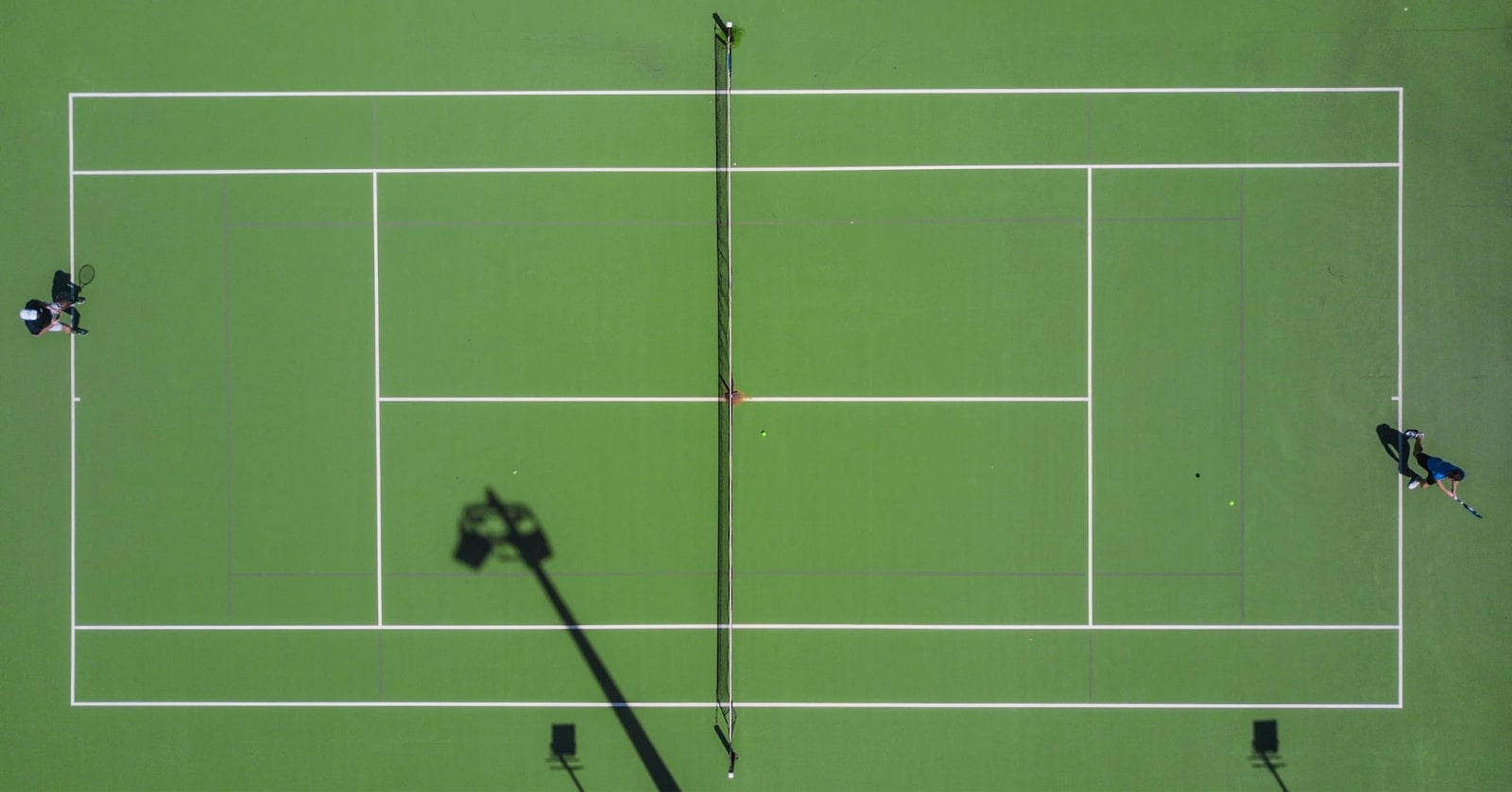Whether you’re a tennis enthusiast looking to upgrade your backyard court or a facility manager responsible for maintaining a professional tennis arena, choosing the right tennis court equipment is crucial. High-quality equipment not only enhances the gameplay but also ensures the safety and satisfaction of players.
In this article, we’ll walk you through some of the essential tennis court equipment, ranging from nets to scoreboards, that can make a significant difference in your tennis experience.
Tennis Nets
A tennis net is arguably the most essential piece of equipment on a tennis court. It divides the court into two halves and is the primary obstacle players must overcome to win points. When selecting a tennis net, consider the following factors:
- Material: Polyester and polyethylene are commonly used materials. They should offer high UV durability and can withstand various weather conditions.
- Top Band: the white band along the top of the net takes severe punishment from the ball and the elements. A polyester top band will last much longer than cheaper PVC bands and ensure you get many years of use from your net.
- Netting: The size of the mesh squares can affect the game. Regulation size is usually just under 4cm, which minimises the chance of the ball going through or getting stuck.
- Cable: Ensure the cable is strong enough to keep the net taut. Steel cables are generally recommended for their strength and durability.
Tennis Posts
Tennis posts hold the net in place and come in various styles and materials:
- Round/Square Posts: Round posts are generally easier to install, while square posts offer a more traditional look.
- Material: Posts made of galvanised steel or aluminium are sturdy and weather-resistant.
- Winder Mechanism: A good post will come with a durable built-in winder mechanism for easily tightening or loosening the net.
Court Surface
The type of surface you choose can greatly influence the style and speed of play. Here are the most common types:
- Hard Courts: Made of acrylic over a concrete or asphalt base, these are the most common in public facilities. They offer a balanced gameplay but can be hard on the joints.
- Clay Courts: Made of crushed brick, shale, or stone, clay courts are softer and result in a slower game. They require more maintenance but are easier on the body.
- Grass Courts: These courts offer the fastest gameplay but require the most maintenance. They are generally used in professional settings.
Scoreboards
A scoreboard is essential for keeping track of points, games, and sets. Options range from simple flip scoreboards to advanced electronic ones.
- Manual Scoreboards: These are easy to use but require someone to update the score manually.
- Electronic Scoreboards: These offer more features like timers, buzzers, and remote controls but are more expensive.
Court Lighting
Proper lighting is crucial for evening or indoor play. LED lights are often recommended for their longevity and energy efficiency. Make sure to position the lights in a way that minimises shadows on the court.
Backboards
A backboard allows players to practise without a partner. They come in various materials like wood, aluminium, or polyethylene.
Ball Machines
For those who want to practise alone, a tennis ball machine can be invaluable. They can launch balls at various speeds and angles, simulating real-game scenarios.
Umpire Chairs
In professional settings, an umpire chair provides a high vantage point for officials to oversee the match. They are generally made of lightweight yet sturdy materials like aluminium.
Fencing and Windscreens
Fencing is essential for safety and for preventing balls from leaving the court. Windscreens can be attached to the fence to block wind or to provide privacy.
Accessories
Numerous smaller accessories can enhance your tennis experience:
- Net Straps and Anchors: These keep the net at the correct height and tension.
- Line Sweepers: These help maintain clay courts by smoothing the surface.
- Ball Hoppers: Useful for collecting balls, especially during practice sessions.
- Court Squeegees: These are used to remove water from the court, ensuring safer play.
Selecting the Right Tennis Court Equipment
Choosing the right tennis court equipment is vital for anyone serious about the sport. From nets to scoreboards, each piece plays its part in making the game enjoyable and safe. While it’s tempting to skimp on some items, investing in quality equipment can enhance the gameplay and potentially save you money in the long run by reducing the need for frequent replacements.
Always consult experts or do thorough research before making any significant purchases. With the right equipment, every match can be a grand slam!
HotShot Sports: Your Go-To for Quality Tennis Court Equipment
If you’re passionate about tennis and are looking to invest in top-notch equipment, HotShot Sports is a name you should know. A proudly New Zealand-owned and operated company, we’ve been designing and making high quality tennis posts since 1984.
With a focus on promoting physical fitness and well-being, our mission aligns perfectly with anyone looking to enhance their tennis game. From tennis nets and posts to lighting solutions and accessories, our range of tennis court equipment meets the highest international sporting code standards. Our team’s commitment to quality, responsiveness, and adaptability ensures you get the best products to meet your specific needs, from tennis court equipment to netball goal and basketball hoops.
So, why settle for less when you can have the best? Turn to HotShot Sports and be a part of New Zealand’s thriving tennis community.


